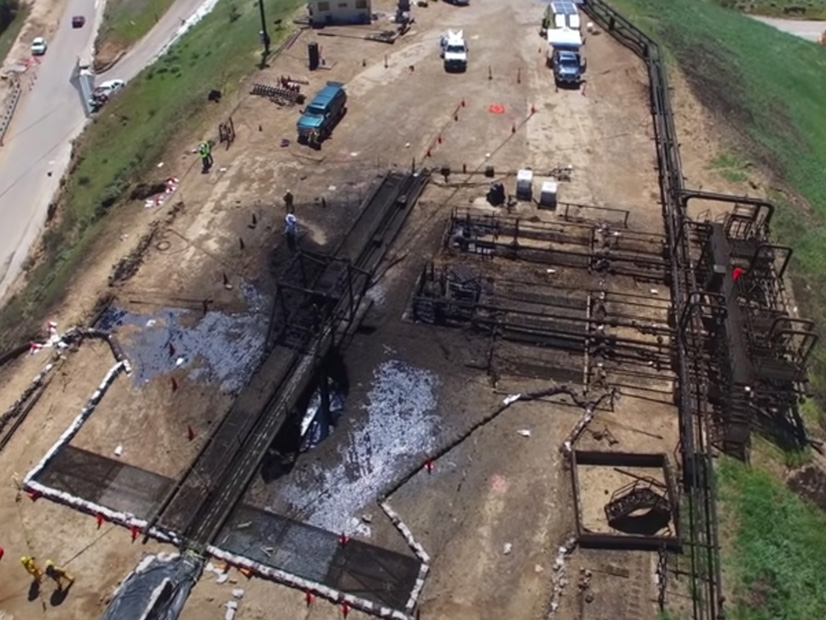
The California Public Utilities Commission on Friday proposed replacing the state’s largest natural gas storage facility, Aliso Canyon, with a combination of non-gas-fired generation, building electrification, energy efficiency and storage.
The proposal accompanied a ruling in which the CPUC detailed its findings from the second phase of its investigation of Aliso Canyon, site of a massive methane leak in October 2015. The underground facility remains necessary for grid reliability and to serve gas customers in the Los Angeles Basin, the commission found.
“As California pursues its decarbonization goals, natural gas demand will decline over time,” it said. “Currently, however, millions of individuals and businesses continue to rely on natural gas for essential services. Given that flowing gas capacity alone is not sufficient to meet peak seasonal or hourly demand, natural gas storage at Aliso Canyon continues to be a key part of the state’s energy infrastructure.”
The commission’s ruling instructs the state’s major utilities, including Aliso Canyon owner Southern California Gas (NYSE:SRE), to provide input on how they would increase supply and reduce demand to allow the facility’s eventual closure. It poses a series of questions to the companies including, “What is the earliest reasonable time a portfolio can be adopted for reduction and elimination of California’s reliance on Aliso Canyon?”
The staff proposal said that to meet demand in 2027 without the facility, utilities would need to annually reduce peak gas demand by 214 MMcfd (about 4% of the peak total) or annually increase their non-gas generation by 1,084 MW of (2% of the state’s electric capacity) — or do a combination of both.
The facility’s fate has been controversial since a ruptured pipe at the SS-25 well poured more than 100,000 tons of natural gas into the air, leading to a blowout and sickening nearby residents. The leak was contained after four months in February 2016.
A few months later, Gov. Jerry Brown signed Senate Bill 380, which told the CPUC to determine “the feasibility of minimizing or eliminating the use of the Aliso Canyon natural gas storage facility … while still maintaining energy and reliability for the region.”
The facility reopened at a reduced capacity in July 2017, but last November the CPUC increased its storage limits by 7 Bcf amid concerns about winter gas supply.
“Our decision today helps ensure energy reliability for the Los Angeles Basin this winter in a safe and reliable manner,” former Commissioner Martha Guzman Aceves said at the time. “We continue to move forward on planning how to reduce or eliminate the use of Aliso Canyon, and to ultimately reduce our reliance entirely on such natural gas infrastructure as we transition to a clean energy economy.”
